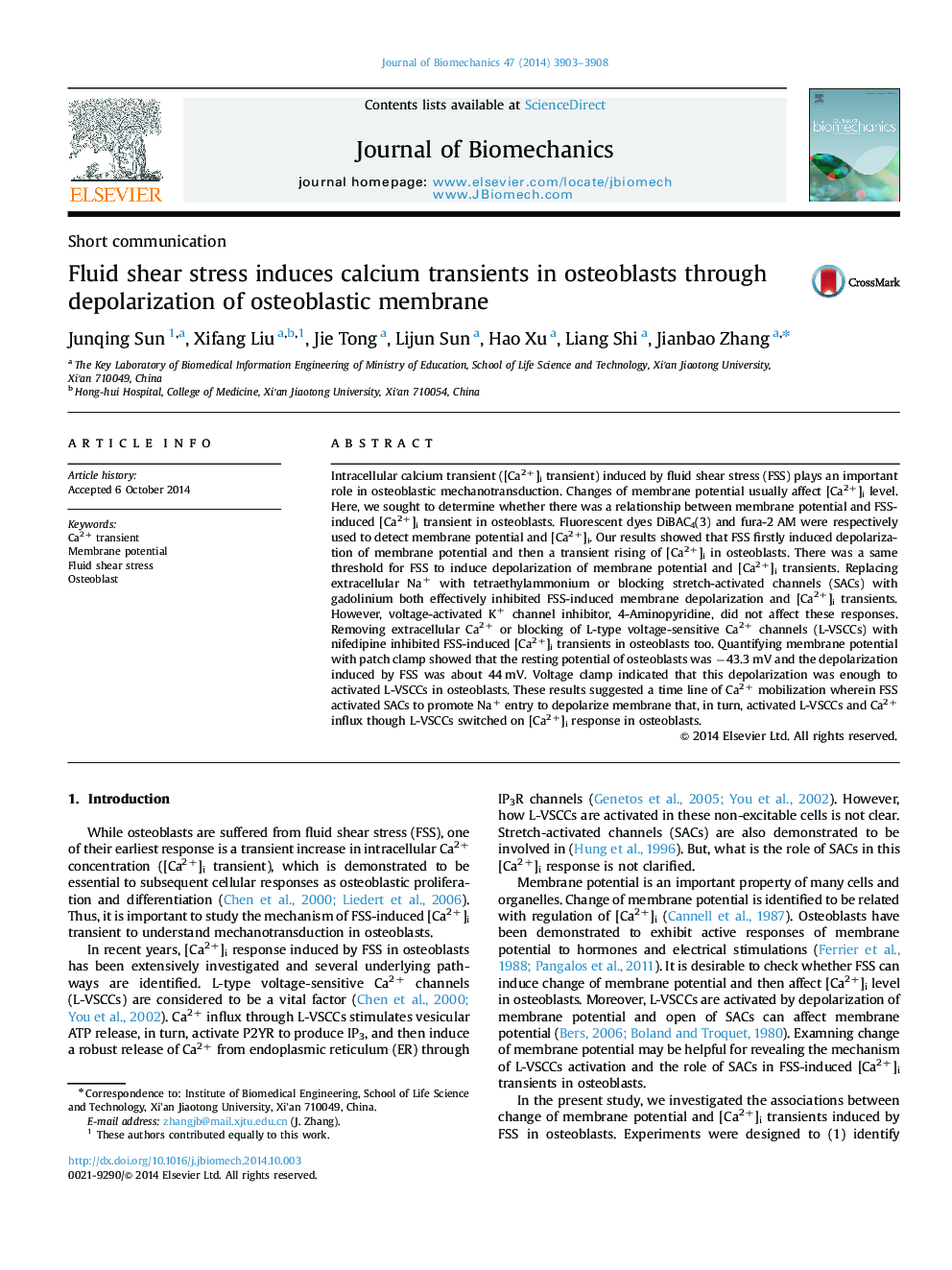| کد مقاله | کد نشریه | سال انتشار | مقاله انگلیسی | نسخه تمام متن |
|---|---|---|---|---|
| 871963 | 910209 | 2014 | 6 صفحه PDF | دانلود رایگان |
Intracellular calcium transient ([Ca2+]i transient) induced by fluid shear stress (FSS) plays an important role in osteoblastic mechanotransduction. Changes of membrane potential usually affect [Ca2+]i level. Here, we sought to determine whether there was a relationship between membrane potential and FSS-induced [Ca2+]i transient in osteoblasts. Fluorescent dyes DiBAC4(3) and fura-2 AM were respectively used to detect membrane potential and [Ca2+]i. Our results showed that FSS firstly induced depolarization of membrane potential and then a transient rising of [Ca2+]i in osteoblasts. There was a same threshold for FSS to induce depolarization of membrane potential and [Ca2+]i transients. Replacing extracellular Na+ with tetraethylammonium or blocking stretch-activated channels (SACs) with gadolinium both effectively inhibited FSS-induced membrane depolarization and [Ca2+]i transients. However, voltage-activated K+ channel inhibitor, 4-Aminopyridine, did not affect these responses. Removing extracellular Ca2+ or blocking of L-type voltage-sensitive Ca2+ channels (L-VSCCs) with nifedipine inhibited FSS-induced [Ca2+]i transients in osteoblasts too. Quantifying membrane potential with patch clamp showed that the resting potential of osteoblasts was −43.3 mV and the depolarization induced by FSS was about 44 mV. Voltage clamp indicated that this depolarization was enough to activated L-VSCCs in osteoblasts. These results suggested a time line of Ca2+ mobilization wherein FSS activated SACs to promote Na+ entry to depolarize membrane that, in turn, activated L-VSCCs and Ca2+ influx though L-VSCCs switched on [Ca2+]i response in osteoblasts.
Journal: Journal of Biomechanics - Volume 47, Issue 16, 18 December 2014, Pages 3903–3908
